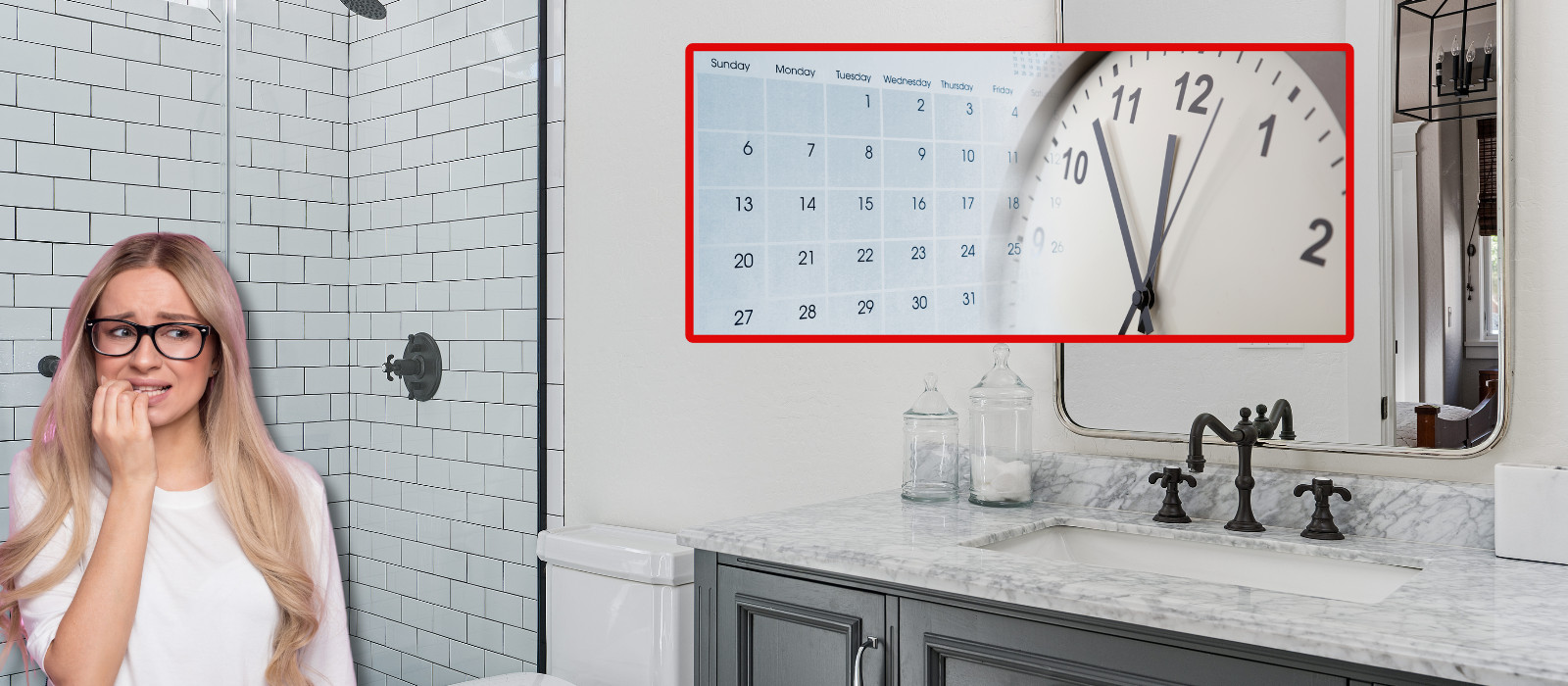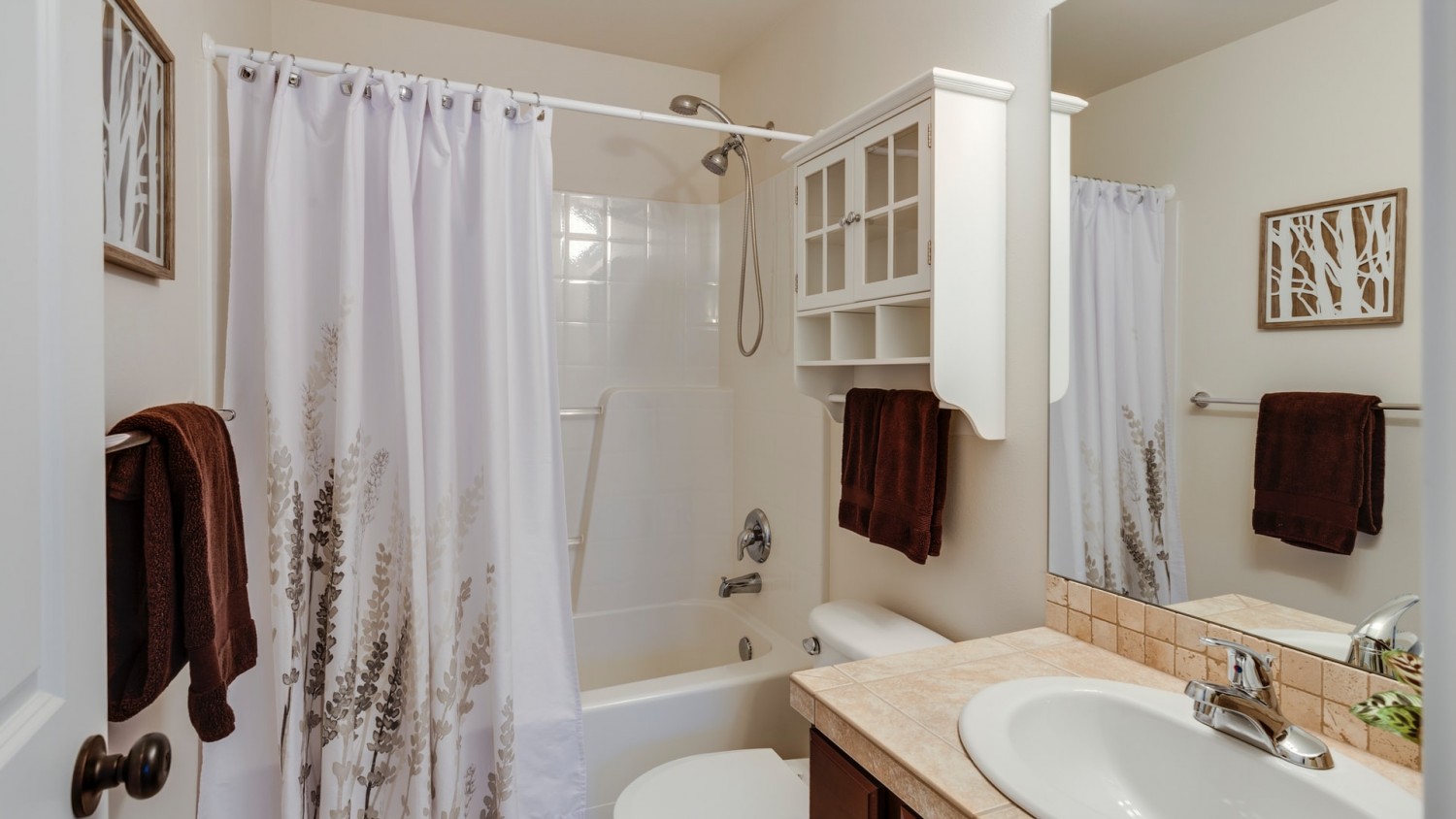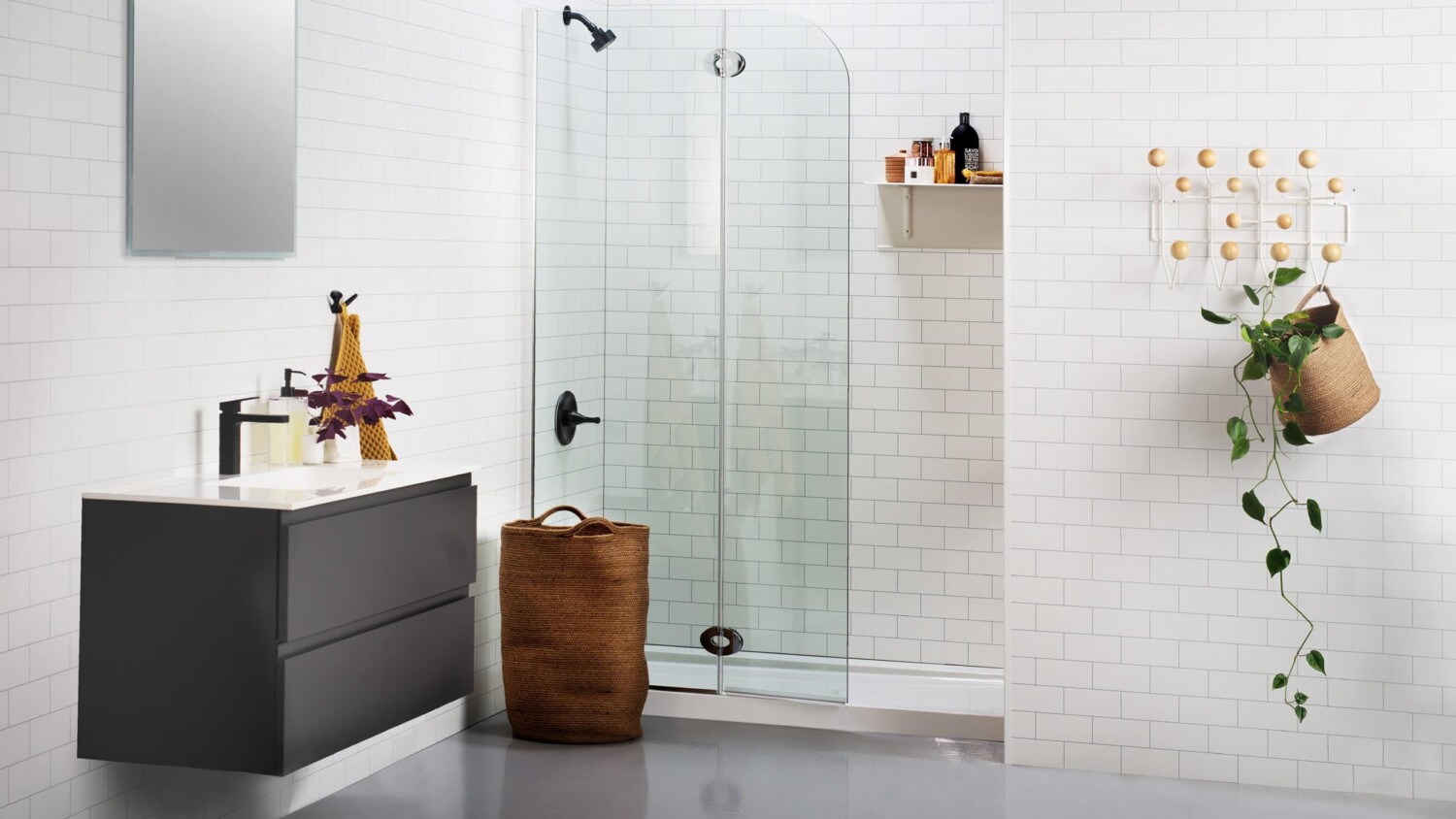Deciding to remodel or install a new bathroom in your home is a big investment, and understandably, you want to make sure it lasts as long as possible. After all, a well-designed bathroom adds value to your home and serves as a personal oasis where you can unwind after a long day. As a homeowner, it’s natural to wonder: how long should a new bathroom last?
The longevity of a newly remodeled bathroom typically varies based on several factors, such as the quality of materials used and maintenance practices. On average, many will attest that bathrooms can last between 7 and 10 years before an upgrade is required. However, each component should be considered carefully. Depending on the flooring and shower material, these sections can last from 15 years to well beyond what you can imagine!
Of course, with proper care and regular updates to fixtures and appliances, you can extend the life of your bathroom beyond the accepted 10 years.
Remember that trends change over time, and while a bathroom may still be functional many years down the line, you might want to update it to keep up with current styles. Ultimately, the lifespan of a bathroom depends on your preferences and priorities regarding design and functionality.
But most importantly, your bathroom can last ages if you take the necessary actions to keep it in good health.
Bathroom Durability Factors
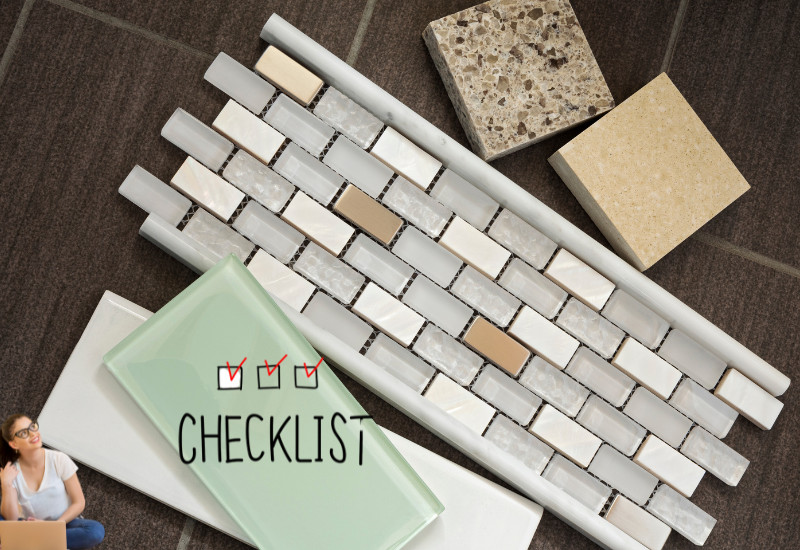
When considering the lifespan of a new bathroom, there are various factors to consider. These factors determine whether your bathroom will last 7-10 years or possibly even longer. Let’s explore some key durability factors contributing to your bathroom’s longevity.
Some of the big hitters you’ll need to think over are:
- High-quality materials for floor tiles, plumbing, and electrical installations can extend the life of your quiet space.
- Opting for reputable brands, durable materials, and an experienced installer will serve you well in the long run.
- Moisture, mold, and mildew are all common enemies of a well-functioning bathroom. Ensuring proper ventilation with extractor fans and a robust moisture-resistant design will keep your bathroom looking fresh and healthy.
- Good lighting and consistent tiles and grout maintenance also prevent moisture-related issues.
With that said, let’s dive a little deeper so you can better understand how to get the most out of your new bath area.
Materials and Fittings: Key to Longevity
When choosing materials for your new bathroom, it’s essential to consider their longevity. For instance, a fiberglass surround tub has a shorter lifespan of around 3 to 5 years before it starts to crack. On the other hand, an Onyx shower can last a lifetime with proper maintenance. In fact, Onyx’s whole marketing strategy centers around this very thing. Though its silicone should be replaced every 15 years.
Regarding flooring, tile floors can last up to 10 years when cared for properly, if not longer. However, keep in mind that grout lines can become dirty over time as they are quite porous and tend to collect all manner of loose debris that your broom and mop don’t recover.
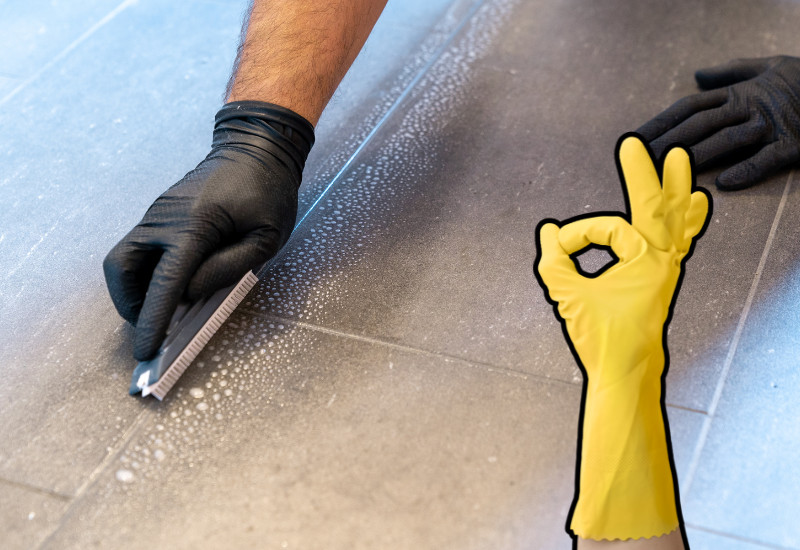
If you’re looking for a longer-lasting, waterproof option, consider LVT or LVP flooring, which can provide up to 25 years of durability.
Now, let’s talk about bathroom fixtures and fittings. These also play a crucial role in the overall longevity of your new bathroom. Selecting high-quality faucets, for instance, can give you an estimated 15-25 years of use. Choose fixtures made of durable materials like bronze, brass, or stainless steel to ensure long-lasting performance.
Importance of Plumbing System
A well-designed and functioning plumbing system is crucial in your new bathroom. It ensures that water flows smoothly through the supply pipes and drains waste away efficiently. A well-maintained system will not only enhance your bathroom experience but also help extend its average effectiveness.
Different plumbing materials have varying lifespans, so choosing the right ones for your bathroom is paramount. For example, supply pipes made of copper, galvanized metal, CPVC, or PEX can last 40 to 70 years, while drain pipes like cast iron, PVC, and ABS can last 50 to 80 years. Going for quality materials will ensure your bathroom functions optimally for an extended period.
Electrical Considerations
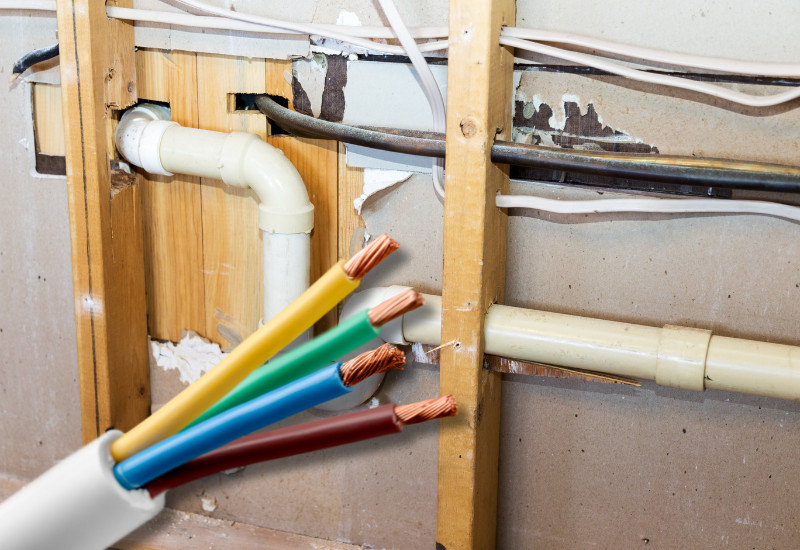
When planning a new bathroom, the electrical aspects are no less important than the plumbing, especially efficient lighting. Carefully selected lighting plays a significant role in creating a comfortable and functional space. Not only does it enhance the ambiance, but it also ensures safety by illuminating all the areas of your bathroom.
For maximum energy efficiency, consider installing LED lights. These have a longer lifespan than traditional incandescent bulbs and consume less power. You’ll appreciate the cost savings on your energy bill, and it’s an eco-friendly choice.
But the existing electrical running through your walls must be inspected before the lighting is installed. If you’re picking energy-efficient fixtures in hopes of longevity but fail to update old wiring, you’re in for a rude awakening. It’s like putting a bandaid on a bullet hole.
Lastly, following local building codes and regulations for bathroom electrical installations is vital. This will ensure the safety and proper functionality of your bathroom’s electrical components. Remember, a well-planned and installed electrical system will not only enhance your bathroom experience but also contribute to the longevity of your new bathroom.
Impact of Moisture and Ventilation
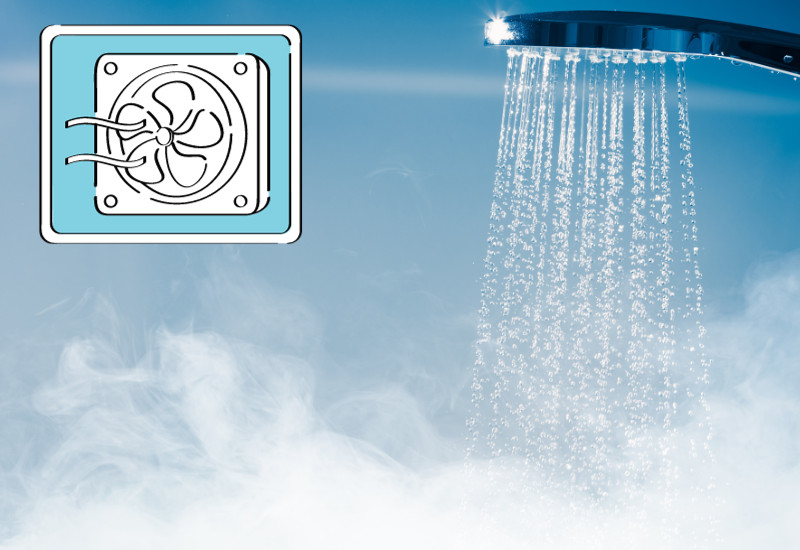
When it comes to your new bathroom, moisture and ventilation play key roles in determining its lifespan. Excess moisture can cause mold and mildew, which in turn cause damage to various surfaces and shorten the life of your bathroom. Proper ventilation is critical in combating these issues and maintaining a healthy environment.
Extractor fans are an essential component of bathroom ventilation. They help to remove excess moisture and humidity, preventing mold and mildew growth. To optimize air circulation, run the extractor fan during your shower or bath and leave it on for at least 15 minutes afterward to fully clear out the moisture.
Taking additional measures to minimize moisture can further extend the life of your bathroom. One easy step you can take is drying surfaces by hand after each use, reducing the potential for mold growth. Also, consider opening a window, if possible, or using a dehumidifier to lower the humidity levels in the room.
There’s certainly more you can do to extend the life of your bath area, but with a careful selection of your materials and proper and regular maintenance, I have no doubt you can surpass that 10-year mark!

